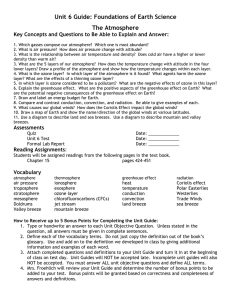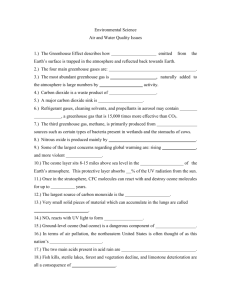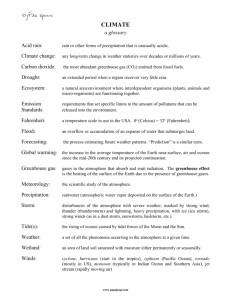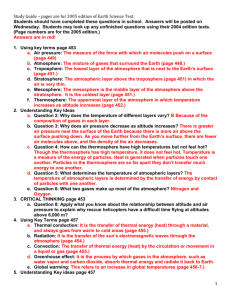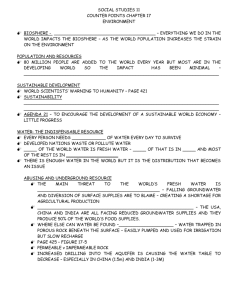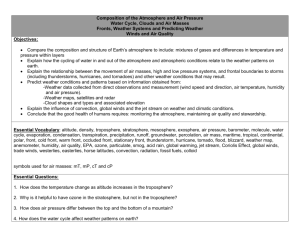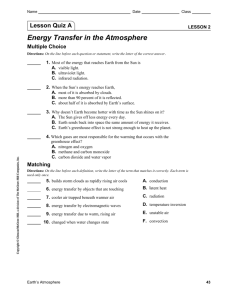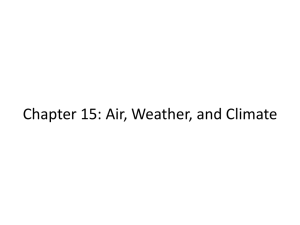Weather Unit Assessment – Study Guide Ch. 1 – The Atmosphere
advertisement
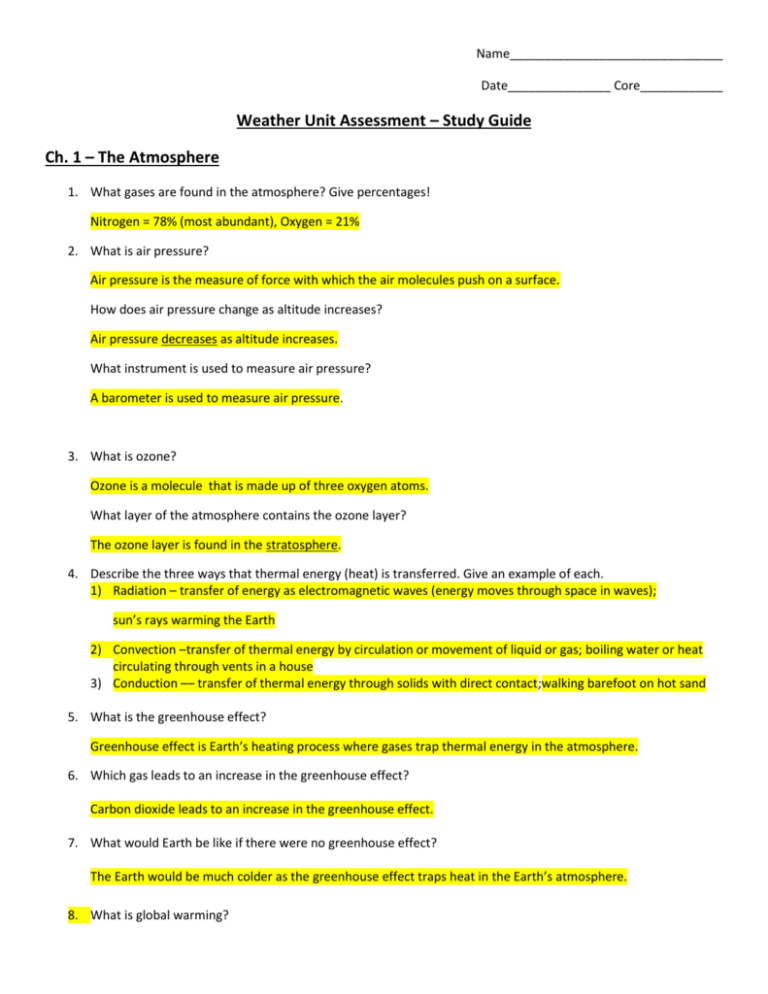
Name_______________________________ Date_______________ Core____________ Weather Unit Assessment – Study Guide Ch. 1 – The Atmosphere 1. What gases are found in the atmosphere? Give percentages! Nitrogen = 78% (most abundant), Oxygen = 21% 2. What is air pressure? Air pressure is the measure of force with which the air molecules push on a surface. How does air pressure change as altitude increases? Air pressure decreases as altitude increases. What instrument is used to measure air pressure? A barometer is used to measure air pressure. 3. What is ozone? Ozone is a molecule that is made up of three oxygen atoms. What layer of the atmosphere contains the ozone layer? The ozone layer is found in the stratosphere. 4. Describe the three ways that thermal energy (heat) is transferred. Give an example of each. 1) Radiation – transfer of energy as electromagnetic waves (energy moves through space in waves); sun’s rays warming the Earth 2) Convection –transfer of thermal energy by circulation or movement of liquid or gas; boiling water or heat circulating through vents in a house 3) Conduction –– transfer of thermal energy through solids with direct contact;walking barefoot on hot sand 5. What is the greenhouse effect? Greenhouse effect is Earth’s heating process where gases trap thermal energy in the atmosphere. 6. Which gas leads to an increase in the greenhouse effect? Carbon dioxide leads to an increase in the greenhouse effect. 7. What would Earth be like if there were no greenhouse effect? The Earth would be much colder as the greenhouse effect traps heat in the Earth’s atmosphere. 8. What is global warming? Global warming is a rise in average global temperatures. 9. What causes wind? The differences in air pressure causes wind. 10. What wind belt is the United States located in? The U.S. are in the wind belt known as the Westerlies Which direction do the winds blow in the US? Wind blows from west to east. 11. What is the Coriolis Effect? The Coriolis effect is the curving of moving objects from a straight path due to Earth’s rotation 12. What instrument measure wind direction? Wind direction is determined with a wind sock/wind vane 13. What instrument measures wind speed? Wind speed is measured by an anemometer. 14. What are jet streams? Jet streams are narrow belts of high-speed winds that blow in the upper troposphere and lower stratosphere. 15. Describe sea and land breezes. During the day, cooler air moves towards the land from the sea – sea breeze. During the night, cooler air moves towards the sea from the land – land breeze . 16. How are breezes and winds named? Winds are named by the direction they blow FROM. 17. Fill in the blanks. Warm air ____rises____________ because it is _____less________ dense. Cold air _______sinks_____________ because it is ____more__________ dense. Areas of ________high_________ pressure always move toward areas of ____low__________ pressure.
